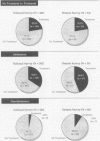Abstract
OBJECTIVES. The purpose of this study was to determine the prevalence of recovery from alcohol problems with and without treatment, including whether such recoveries involved abstinence or moderate drinking. METHODS. Data from two surveys of randomly selected adults in the general population were analyzed. Random-digit dialing was used to conduct telephone interviews with 11,634 and 1034 respondents. Respondents 20 years of age or older were categorized on the basis of drinking status and history. RESULTS. Both surveys found that most individuals (77.5% and 77.7%) who had recovered from an alcohol problem for 1 year or more did so without help or treatment. A sizable percentage (38% and 63%) also reported drinking moderately after resolving their problem. CONCLUSIONS. These two surveys are among the first to report prevalence rates for recovery from alcohol problems for treated and untreated individuals and for moderation and abstinence outcomes.
Full text
PDF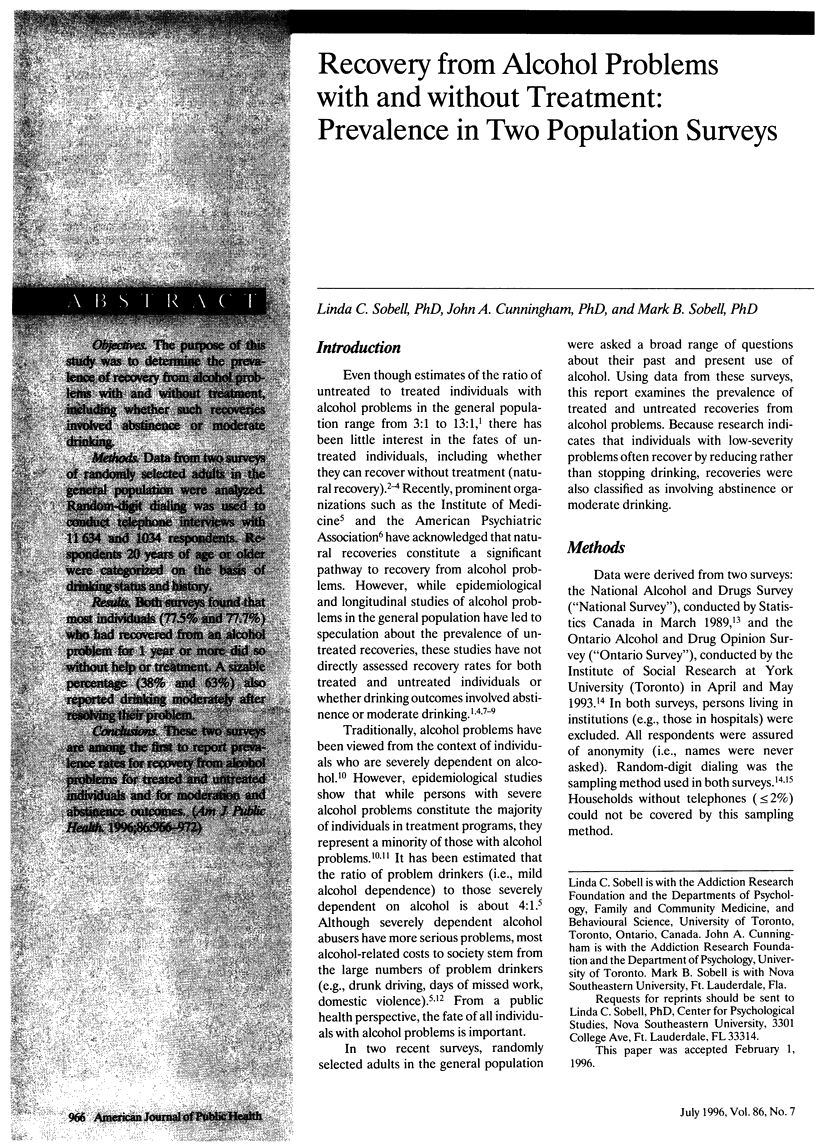
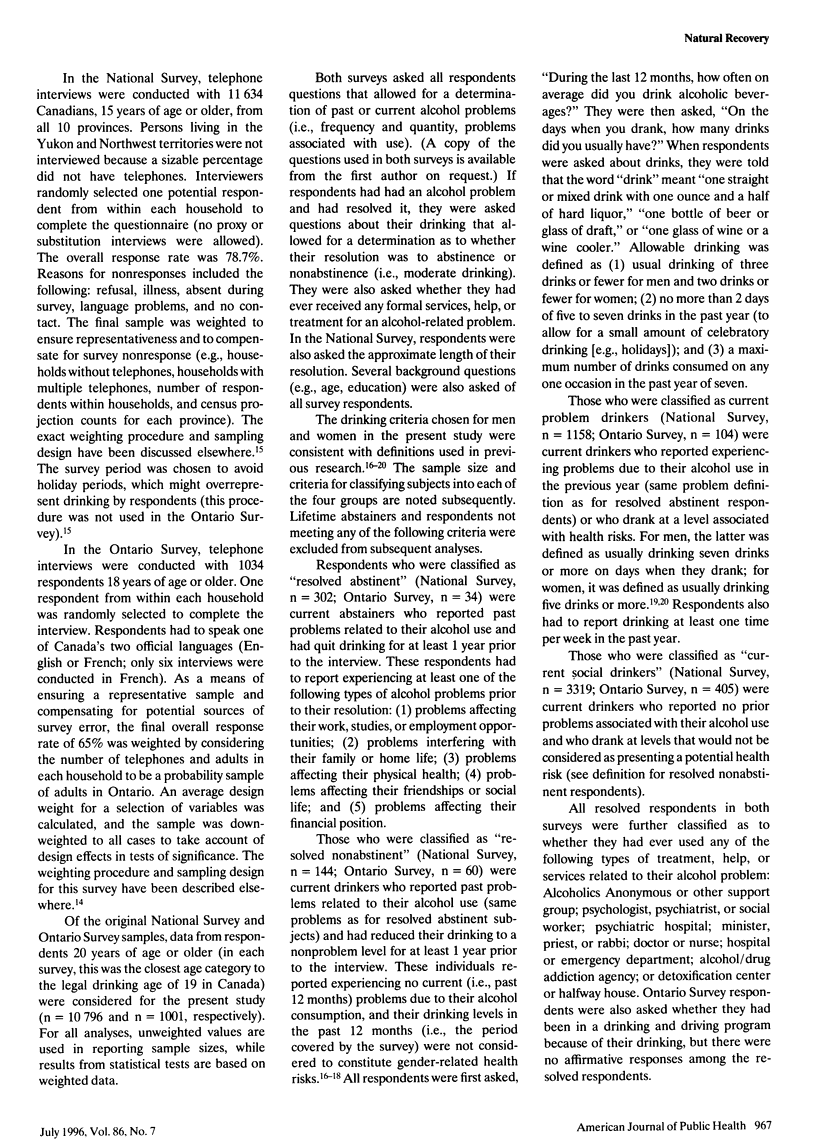
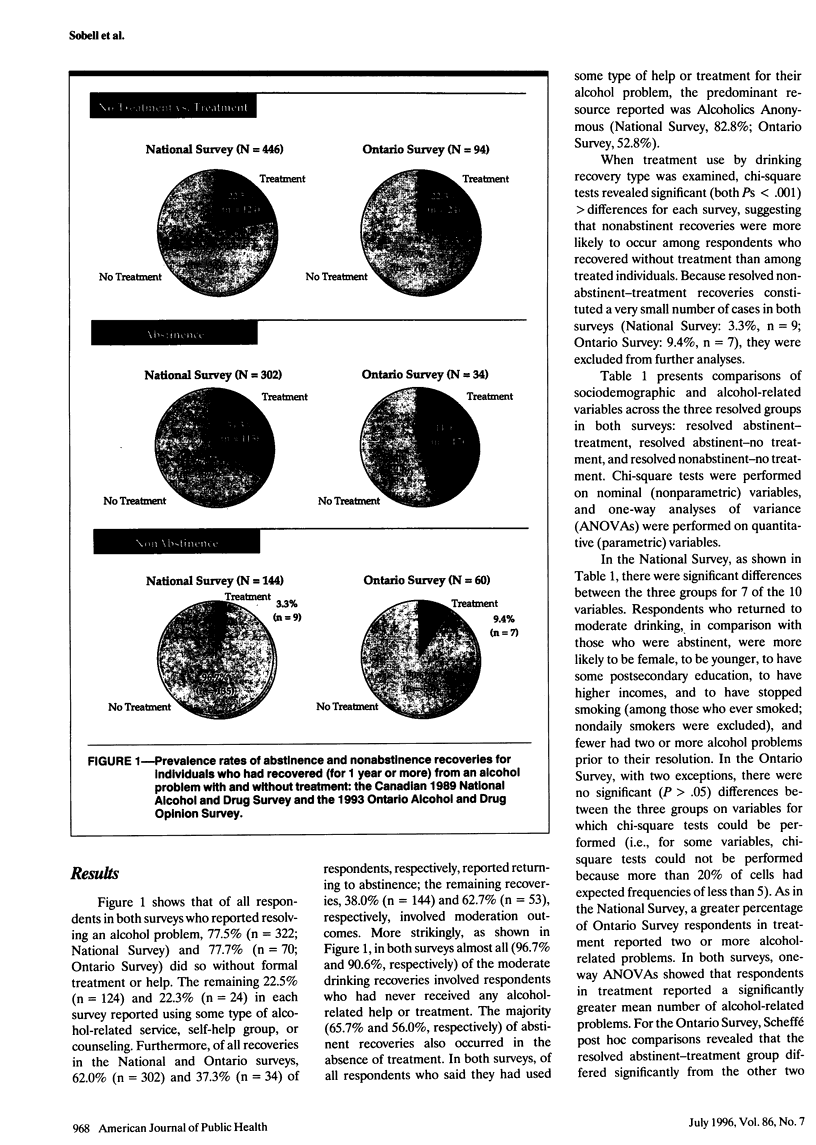
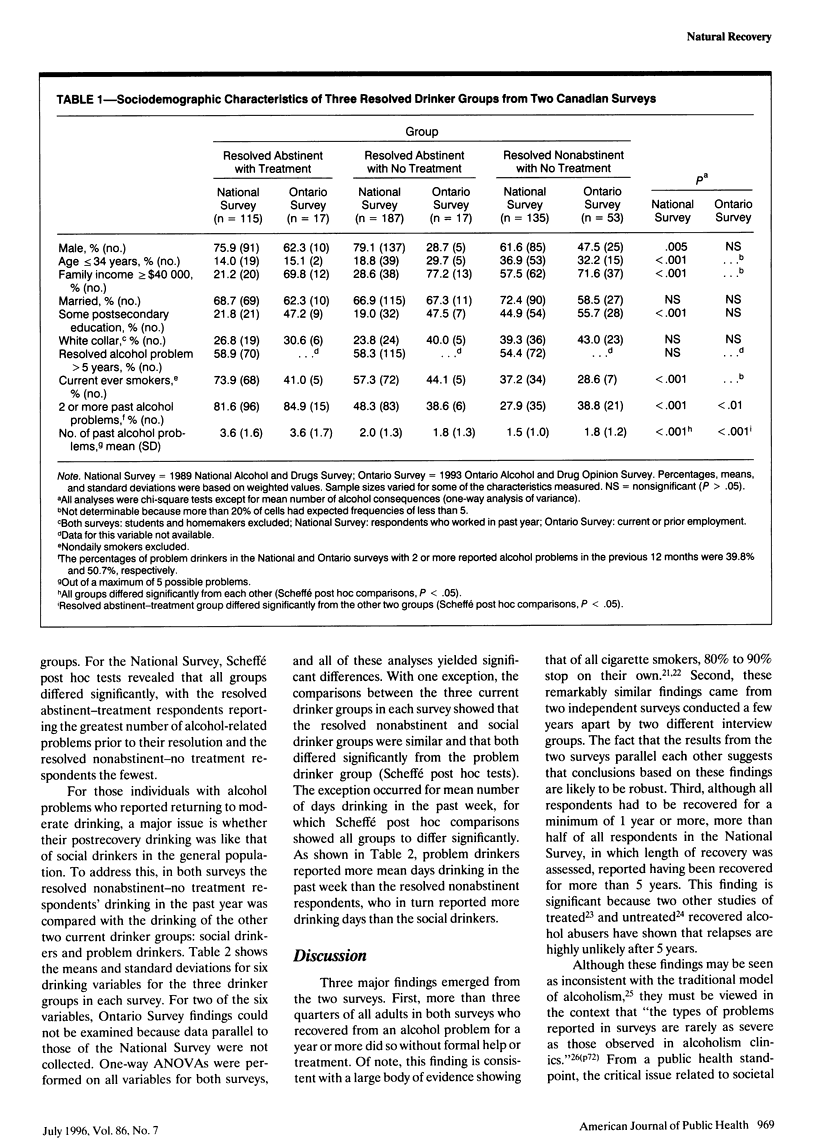
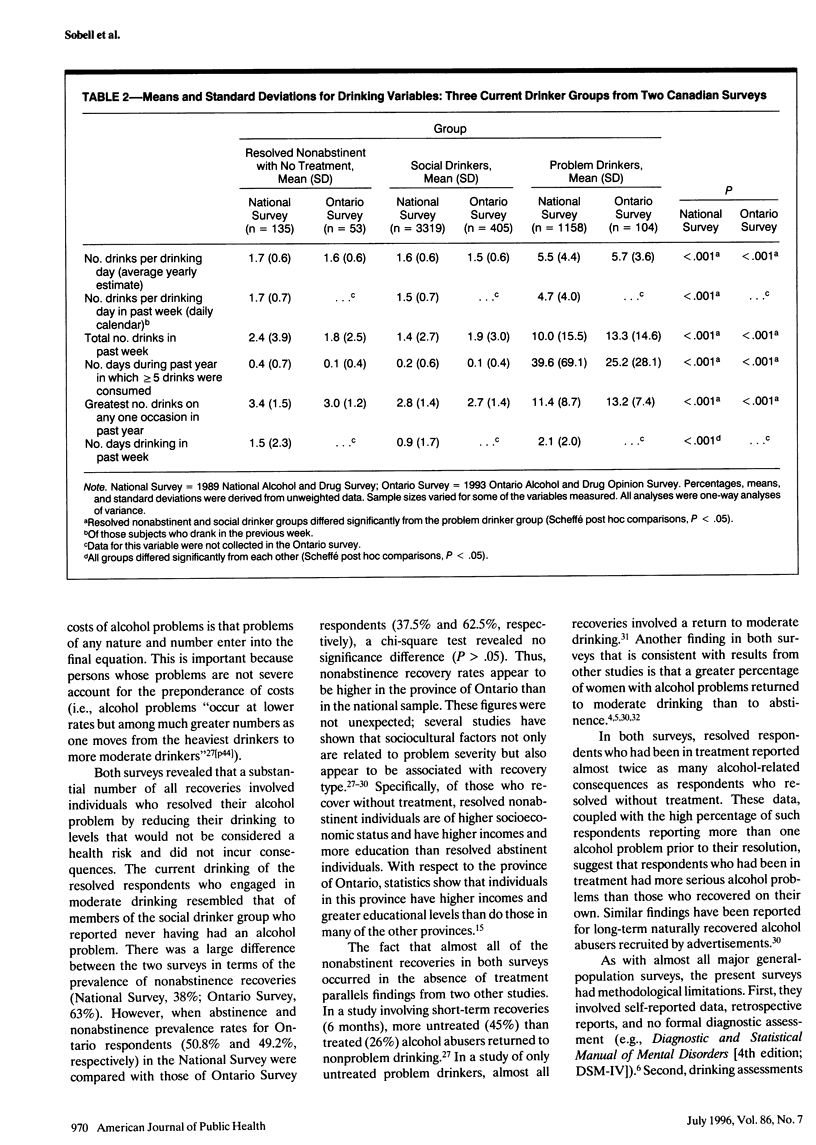
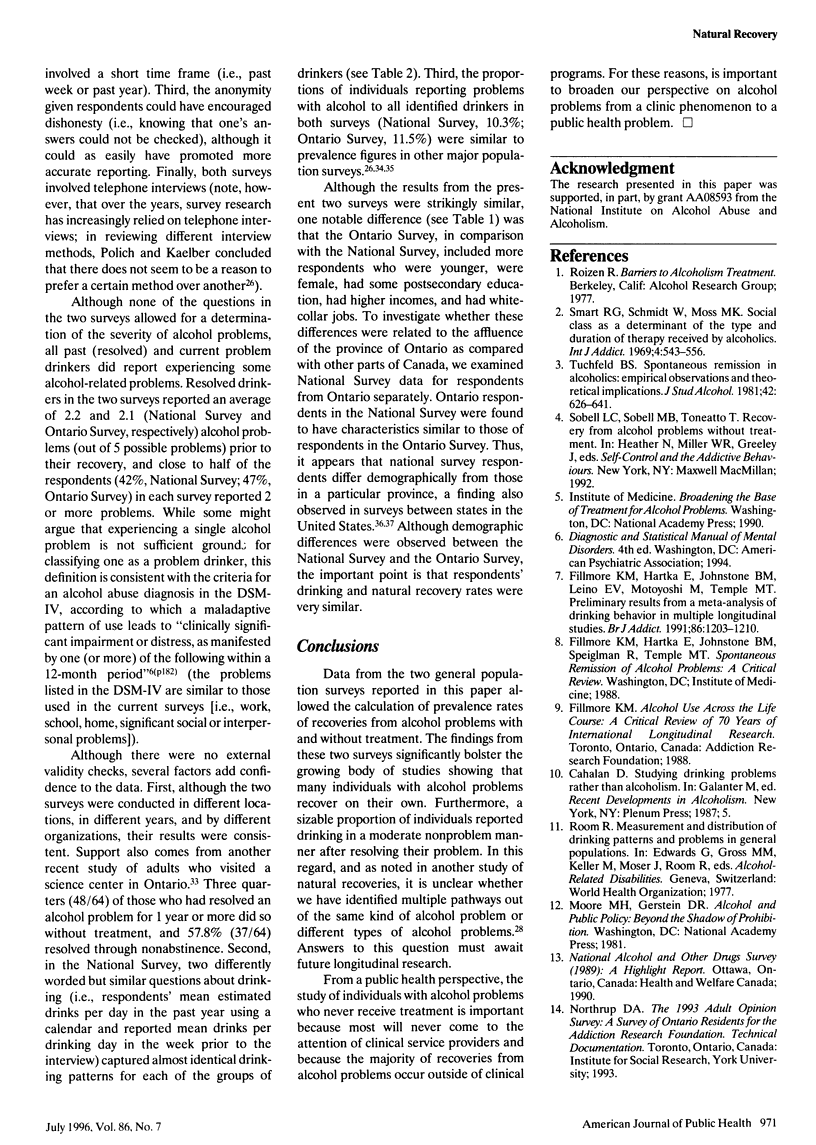

Images in this article
Selected References
These references are in PubMed. This may not be the complete list of references from this article.
- Anderson P., Cremona A., Paton A., Turner C., Wallace P. The risk of alcohol. Addiction. 1993 Nov;88(11):1493–1508. doi: 10.1111/j.1360-0443.1993.tb03135.x. [DOI] [PubMed] [Google Scholar]
- Catarino P. A. Is there a safe level of drinking?: A student's view. Alcohol Alcohol. 1992 Sep;27(5):465–470. [PubMed] [Google Scholar]
- Cunningham J. A., Sobell L. C., Sobell M. B., Kapur G. Resolution from alcohol problems with and without treatment: reasons for change. J Subst Abuse. 1995;7(3):365–372. doi: 10.1016/0899-3289(95)90029-2. [DOI] [PubMed] [Google Scholar]
- De Soto C. B., O'Donnell W. E., De Soto J. L. Long-term recovery in alcoholics. Alcohol Clin Exp Res. 1989 Oct;13(5):693–697. doi: 10.1111/j.1530-0277.1989.tb00406.x. [DOI] [PubMed] [Google Scholar]
- Fillmore K. M., Hartka E., Johnstone B. M., Leino E. V., Motoyoshi M., Temple M. T. Preliminary results from a meta-analysis of drinking behavior in multiple longitudinal studies. Br J Addict. 1991 Oct;86(10):1203–1210. doi: 10.1111/j.1360-0443.1991.tb01700.x. [DOI] [PubMed] [Google Scholar]
- Fiore M. C., Novotny T. E., Pierce J. P., Giovino G. A., Hatziandreu E. J., Newcomb P. A., Surawicz T. S., Davis R. M. Methods used to quit smoking in the United States. Do cessation programs help? JAMA. 1990 May 23;263(20):2760–2765. [PubMed] [Google Scholar]
- Hilton M. E. Drinking patterns and drinking problems in 1984: results from a general population survey. Alcohol Clin Exp Res. 1987 Apr;11(2):167–175. doi: 10.1111/j.1530-0277.1987.tb01283.x. [DOI] [PubMed] [Google Scholar]
- Humphreys K., Moos R. H., Finney J. W. Two pathways out of drinking problems without professional treatment. Addict Behav. 1995 Jul-Aug;20(4):427–441. doi: 10.1016/0306-4603(95)00005-w. [DOI] [PubMed] [Google Scholar]
- Kranzler H. R., Babor T. F., Lauerman R. J. Problems associated with average alcohol consumption and frequency of intoxication in a medical population. Alcohol Clin Exp Res. 1990 Feb;14(1):119–126. doi: 10.1111/j.1530-0277.1990.tb00457.x. [DOI] [PubMed] [Google Scholar]
- Orleans C. T., Schoenbach V. J., Wagner E. H., Quade D., Salmon M. A., Pearson D. C., Fiedler J., Porter C. Q., Kaplan B. H. Self-help quit smoking interventions: effects of self-help materials, social support instructions, and telephone counseling. J Consult Clin Psychol. 1991 Jun;59(3):439–448. doi: 10.1037//0022-006x.59.3.439. [DOI] [PubMed] [Google Scholar]
- Rimm E. B., Giovannucci E. L., Willett W. C., Colditz G. A., Ascherio A., Rosner B., Stampfer M. J. Prospective study of alcohol consumption and risk of coronary disease in men. Lancet. 1991 Aug 24;338(8765):464–468. doi: 10.1016/0140-6736(91)90542-w. [DOI] [PubMed] [Google Scholar]
- Rosenberg H. Prediction of controlled drinking by alcoholics and problem drinkers. Psychol Bull. 1993 Jan;113(1):129–139. doi: 10.1037/0033-2909.113.1.129. [DOI] [PubMed] [Google Scholar]
- Sobell L. C., Sobell M. B., Toneatto T., Leo G. I. What triggers the resolution of alcohol problems without treatment. Alcohol Clin Exp Res. 1993 Apr;17(2):217–224. doi: 10.1111/j.1530-0277.1993.tb00752.x. [DOI] [PubMed] [Google Scholar]
- Tuchfeld B. S. Spontaneous remission in alcoholics. Empirical observations and theoretical implications. J Stud Alcohol. 1981 Jul;42(7):626–641. doi: 10.15288/jsa.1981.42.626. [DOI] [PubMed] [Google Scholar]



